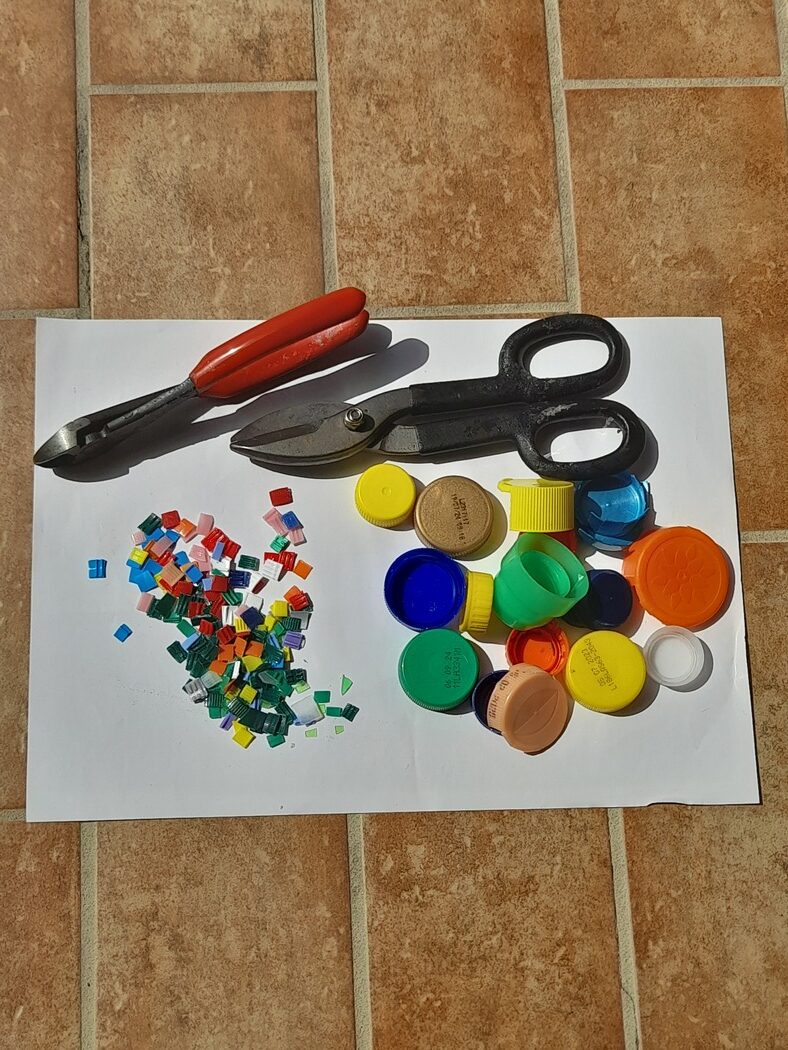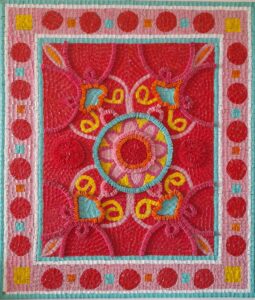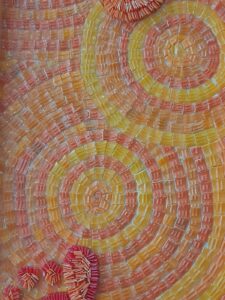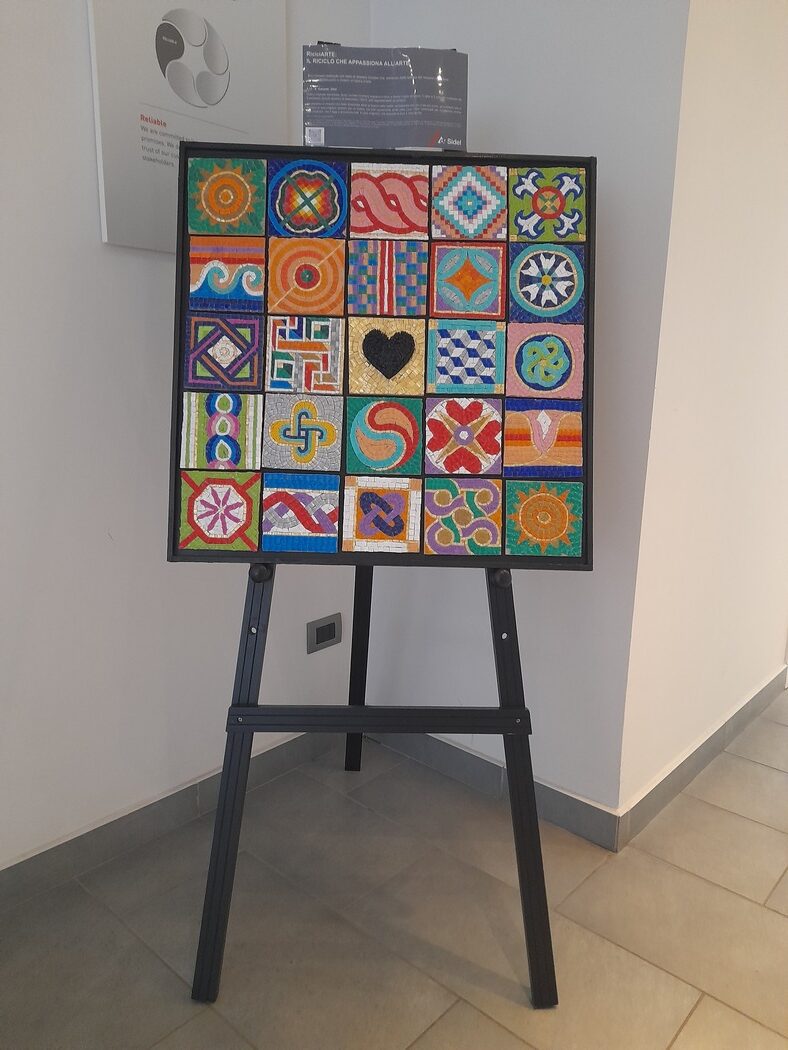Simona Gazzotti
Year of birth: 1973.
Where do you live: Vignola (Modena) Italy.
Your education: My guidelines are passion, curiosity, beauty, research and sustainability.
Describe your art in three words: Plastic Caps Ecomosaic.
Your discipline: Ecomosaic with the direct technique of Roman and Byzantine mosaic using only recycled material, creating the mosaic tiles with plastic caps.
Instagram: @simonagazzottiarts
What inspired you to start working with plastic caps as a medium for your mosaics?
A waste material such as plastic bottle caps to create a work of art.
«The tradition is not to worship the ash, but to preserve the fire».
This phrase represents my ecomosaics: a very ancient classic artisan art, the mosaic, evolving with the use of new material, the caps of plastic bottles, very colourful, unnatural, waste. Recycling that becomes art.
How do you select the colors and arrange the caps to achieve the desired effect in your works?
After collecting the caps, I cut them into small regular tiles, then I compose the work with the Roman and Byzantine mosaic technique: small regular tiles placed directly on a support.

Fragmentation and recomposition of the material. The mosaic is like a skin that creates a new work, in direct relationship with the light. My favorite characteristics of the mosaic are the lines that are created by placing the tiles together and the reflections of light that are generated on the surfaces.
The mosaic is light incarnate.
Can you share the process you follow from the conception of an idea to the completion of an ecomosaic?
I think and choose the subject or work to reproduce, then the ecomosaic grows on its own, the prophetic aspect of art: creating a new work is always a terrain and realm of possibilities. At the beginning of the work, I don’t know where it will lead, coming to do things that I didn’t even know or realize.

How has your background in traditional Roman and Byzantine mosaics influenced your current work?
My passion is influenced by Ravenna, my “locus amoenus” (enchanting place), which has always inspired me with its impressive, ancient, and evocative mosaics, with the reflections of light generated by small “vibrant” tiles. I attend traditional Roman and Byzantine mosaic courses in Ravenna. The execution of mosaics becomes my way of creating after having drawn and painted for years, because with the mosaic, my horror vacui is resolved, all the voids are filled, and with the positioning of the last tile, the work is finished. The lines are my favorite feature of the mosaic. The curved lines that I compose by aligning the tiles in the backgrounds of my ecomosaics are the characteristic of my works.

What challenges have you faced while working with plastic caps, and how have you overcome them?
No problem. The plastic caps are very colourful, unnatural, simple to cut, easy to find (I involved friends, relatives, and acquaintances in the collection). This type of material allows me to “renew” the mosaic while maintaining the traditional technique of installing small regular tiles.
How has the birth of your daughter influenced your artistic journey?
I started with Roman and Byzantine mosaic using traditional materials (marble, glass, stone) before the birth of my daughter. Then, not wanting to miss even a moment of her growth and in the impossibility of having a dedicated studio, I thought of a material that allows me to work at the kitchen table, without leaving home. Plastic caps are perfect!
What role does environmental consciousness play in your work, and how do you incorporate sustainability into your art practice?
I like and am passionate about using waste material, and spreading this awareness of reuse satisfies me a lot. When I explain to people and especially to school children that they can transform plastic caps into art, I am happy. Recycling that excites art.


Leave a Reply